Teaching the Greatness of America as an Experience, Part 1
Written by Tony Mussari
Copyright 2012
Mussari-Loftus Associates
The Face of America Project
faceofamericawps.com
Nine-tenths of education is encouragement.Anatole France
A Priceless Opportunity
Life is a series of opportunities. Sometimes we see them, and we act accordingly. Unfortunately, many times they go unnoticed, and we miss the moment.
On April 3, Kitch and I entered the Marts Center on the Wilkes University campus to make the most of an opportunity. This Face of America journey began in September 2011 when we received this note:
on the Wilkes University campus to make the most of an opportunity. This Face of America journey began in September 2011 when we received this note:
We read the piece about your film … and would love it if you could come to our campus and speak about your important work with our education students sometime during the spring semester… We believe that area artists and educational leaders in all fields can help us prepare our students to be the best teachers they can be; not all learning happens in the classroom, as you are well aware.
Thank you very much.
Judy and Bob Gardner
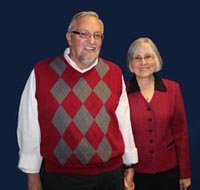
Judy and Bob Gardner are exemplary Faces of America on its best day. They are teachers with a purpose. They want their students to hear other voices in their classroom and have real world experiences outside the walls of ivy. Their expertise is experiential learning, and their gift to Wilkes University and the students they teach is the Gardner Educational Forum Series.
Our assignment was to help their students understand how documentary film can be used to take students to places where they can learn important life lessons.
The Challenge
How do you explain 47 years of work in 90 minutes? How do you make it interesting and meaningful to students who live in the digital suburbs of Facebook and Twitter? It took a lot of thought and two weeks of intense preparation to get it right. Ultimately, I followed the advice of my mother as recorded in an inspirational thought typed in bold black letters at the bottom of one of Judy Gardner’s notes:
BE YOURSELF!
Once I reached this conclusion, I felt a kind of freedom that is hard to explain, but wonderful to experience.
Kitch did not want the stress that comes with a presentation of this magnitude, so I did the heavy lifting.
My strategy was simple. I would do what I did in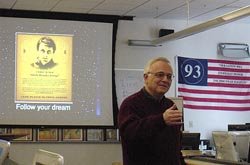 my classroom. Thinking of it as just another class in a much different forum, freed me from the restraints that fear and worry impose on speakers. I would use examples from our 2005 Miracle at Lake Placid Project and three others: What is America? (2001-2011), The Face of America (2010) and Gettysburg (2012).
my classroom. Thinking of it as just another class in a much different forum, freed me from the restraints that fear and worry impose on speakers. I would use examples from our 2005 Miracle at Lake Placid Project and three others: What is America? (2001-2011), The Face of America (2010) and Gettysburg (2012).
In my mind’s eye, Coach Herb Brooks and his team of lunch pail college kids is a classic example of American greatness, and our Miracle Project was a textbook case of experiential learning. It enabled 20 seniors to learn about the legendary coach, his philosophy, his team and their unprecedented victory over the Russians in the 1980 Winter Olympics.
Three trips to Lake Placid, New York, during the 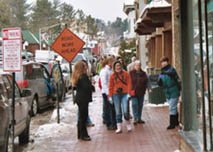 25th anniversary of the Miracle on Ice provided students with an opportunity to connect with the place and the people who made the victory over the best hockey team on the planet happen. We attended the relighting of the Olympic Flame, the Mirror Lake party and the rededication of the1980 rink. From our classroom, students conducted interviews via conference calls with Patti Brooks, her children Kelly and Danny, Ross Bernstein, author of Remembering Herbie, and Wayne Coffee, author of The Boys of Winter.
25th anniversary of the Miracle on Ice provided students with an opportunity to connect with the place and the people who made the victory over the best hockey team on the planet happen. We attended the relighting of the Olympic Flame, the Mirror Lake party and the rededication of the1980 rink. From our classroom, students conducted interviews via conference calls with Patti Brooks, her children Kelly and Danny, Ross Bernstein, author of Remembering Herbie, and Wayne Coffee, author of The Boys of Winter.
We assembled a team of consultants including Julie Marvel, a University of Minnesota graduate and an accomplished athlete and public relations professional, songwriter Mike Lewis, graphic designers D.J. Pizzani and Colleen Connelly, and voiceover specialist Greg O’Brien. Their unique contributions added a special dimension to this experience.
The final episode in our What is America? Series,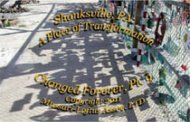 Shanksville, PA: A Place of Transformation, gave a voice to 11 cheerleaders from North Plainfield, New Jersey, who visited the Peoples’ Memorial to the Heroes of Flight 93 in 2010 and 2011 with us. Each one of these students had a story to tell about life and learning outside the classroom. These students and their coach, Skip Pulcrano, opened the door to the North Plainfield School District for us.
Shanksville, PA: A Place of Transformation, gave a voice to 11 cheerleaders from North Plainfield, New Jersey, who visited the Peoples’ Memorial to the Heroes of Flight 93 in 2010 and 2011 with us. Each one of these students had a story to tell about life and learning outside the classroom. These students and their coach, Skip Pulcrano, opened the door to the North Plainfield School District for us.
The Face of America project is the link to the 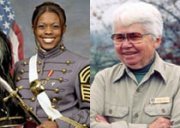 Gettysburg National Military Park and two people who I believed were essential to the lecture: 2d Lt. Emily Perez and Barbara Platt. Both Barbara and Emily are inspirational women of dignity, class, courage and service. They speak to the greatness of America in quiet acts of kindness and putting the greater good before their personal interests. Emily Perez is the inspiration for our Face of America project. Barbara is the inspiration for our Gettysburg project.
Gettysburg National Military Park and two people who I believed were essential to the lecture: 2d Lt. Emily Perez and Barbara Platt. Both Barbara and Emily are inspirational women of dignity, class, courage and service. They speak to the greatness of America in quiet acts of kindness and putting the greater good before their personal interests. Emily Perez is the inspiration for our Face of America project. Barbara is the inspiration for our Gettysburg project.
My close and life-changing encounter with the movie To Sir With Love in 1967 provided an ideal way to begin the presentation. Sidney Poitier’s powerful portrayal of interim teacher Mark Thackeray is a textbook example of experiential learning. His decision to treat the students in his English class like adults and teach them survival skills by taking them out of the classroom provided the context I needed to frame my Gardner lecture.
movie To Sir With Love in 1967 provided an ideal way to begin the presentation. Sidney Poitier’s powerful portrayal of interim teacher Mark Thackeray is a textbook example of experiential learning. His decision to treat the students in his English class like adults and teach them survival skills by taking them out of the classroom provided the context I needed to frame my Gardner lecture.
Preparation
While designing my PowerPoint presentation, I  received help from several members of our 2005 Miracle team: Rob Anderson, Chris Boos, Ryan Doyle, Matt Harm, Stephanie Youngs, Karlina Zikor and D.J.Pizzani.
received help from several members of our 2005 Miracle team: Rob Anderson, Chris Boos, Ryan Doyle, Matt Harm, Stephanie Youngs, Karlina Zikor and D.J.Pizzani.
D.J. was not a member of the class. He was doing an internship in New Jersey, but he volunteered to help us. He designed the collage for the project, and all of the cover designs for our year-end events. This is an excerpt from his evaluation of the experience:
“It was incredibly beneficial to learn from Herb Brooks and his 1980 Olympic Team. Something you taught me, Doc, and came out of your course and this project is: If it wasn’t difficult, it wouldn’t be worth doing.”
Ryan Doyle offered this discovery:
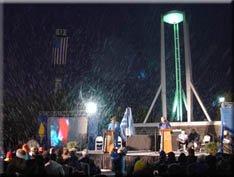
“I learned that life is about making good stories, sometimes even out of the worst situations. Be honest, be humble, work hard and above all don’t be afraid of the world, make an adventure out of it.”
Stephanie Youngs was very specific about her take away memory: “One thing I learned for sure is that nothing comes your way without any work involved!”
The lesson Christopher Boos learned from the Miracle team was personal and powerful:
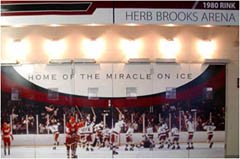
“The triumph was a result of believing they could succeed, and then making it happen. Keeping that message in mind has given me the strength and courage to face numerous, obstacles…”
Rob Anderson learned three things during the Miracle Project: “The course taught me to keep focused, hard work pays off, never feel defeated.”
Matt Harm liked the Mark Thackeray tone of the course: “We were treated as students, but we were also treated as professionals.”
When it was finished, the PowerPoint presentation had 100 slides with 10 collages, 14 graphics and 144 pictures. Cartier Scott, an affable Wilkes University student, volunteered to help set up the computer for the presentation. He and Dr. Bob Gardner made sure everything worked perfectly.
A last minute decision to wear the USA Olympic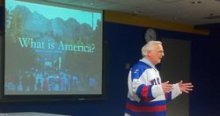 jersey the students in my 2005 class gave me as a gift helped to reinforce the power of creative dreaming. Bob Kalinowski noted that moment in a comment he wrote after the presentation. “Right from the beginning, I was captivated and beamed with pride when you put on the USA jersey.”
jersey the students in my 2005 class gave me as a gift helped to reinforce the power of creative dreaming. Bob Kalinowski noted that moment in a comment he wrote after the presentation. “Right from the beginning, I was captivated and beamed with pride when you put on the USA jersey.”
Feedback
The Miracle at Lake Placid resonated with Virginia and John Zikor. They lived it as parents. Their daughter, Karlina, lived it as a student in the class. This is what Karlina wrote about her experience:
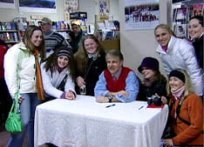
Learning about Herb Brooks and the 1980 Olympic Team made me realize that through hard work, dedication and team work anything is possible. The values that I learned from that team, project and class will continue to stay with me. I hope one day into the future, to eventually pass on what I learned from that class to my children.
The references to the movie To Sir With Love worked for Gerry O’Donnell. “To Sir With Love was in my mind one of the best movies ever,” he wrote, “both from the acting standpoint but more importantly from the life lessons it taught… if you reached only 25% of the teachers in the room it will make this valley a better place!”
Sean McGrath liked the naturalization scenes included in the documentary Shanksville, Pa: A Place of Transformation. “I particularly thought about those people getting their citizenship. They beamed with glory – unlike the majority of Americans who were fortunate to be born American and miss the entire point!”
Skip Pulcrano, the coach of the cheerleading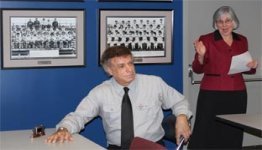 squad at North Plainfield High School, drove from New Jersey, to attend the lecture. He had several things to say about the presentation:
squad at North Plainfield High School, drove from New Jersey, to attend the lecture. He had several things to say about the presentation:
It was my pleasure to be there for such a great presentation. This was the first time I could actually just sit there and absorb and enjoy the moment.
I sincerely hope that all those in attendance, especially the young student teachers, adopt your words of truth and dignity, honestly spoken, and implement them into actions.

I think your presentation should be delivered to the entire faculty of the North Plainfield School District. We are always having teacher workshop days and incorporating your presentation would be a tremendous burst of motivation.
Thanks again for everything you and Kitch have done for our students and for the gift of such a wonderful presentation yesterday. You have our everlasting gratitude.
Joanne Chabalko, is the mother of a West Point graduate and the woman who introduced us to Emily Perez. She offered kind words about the presentation:
“When you showed Emily, I wanted to cry. Your work is more important than ever. I pray that you continue to be blessed with good health so you can continue your passion.”
Our friend, Connie Wynn, attended the lecture with her husband Joe. They arrived early and they stayed late. Connie gave Kitch a beautiful bouquet of roses to celebrate her victory over breast cancer, and Joe snapped a number of digital pictures of the event. Connie’s words and Joe’s pictures lifted our spirits. Their comments validated all of the time and energy we invested in the event.
her husband Joe. They arrived early and they stayed late. Connie gave Kitch a beautiful bouquet of roses to celebrate her victory over breast cancer, and Joe snapped a number of digital pictures of the event. Connie’s words and Joe’s pictures lifted our spirits. Their comments validated all of the time and energy we invested in the event.
“You certainly blessed all of us yesterday with your beautiful presentation. You gave your presentation with love and compassion and it’s so hard to find people who are compassionate about their work. This shows in each and every documentary that you both do. Don’t ever stop teaching.”
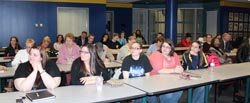
Several times during the presentation, my eyes and my heart connected with four former students who were in the room: Laura Haden, Joe Haberski, Bob Kalinowski and Shivaun O’Donnell.
During the Q&A, an education major from Wilkes told everyone in the room about her life as an Upward Bound student. She was quick to point out why she could relate to everything in the presentation. For an old teacher like me, it doesn’t get any better than that.
We went to Wilkes University on a beautiful Tuesday afternoon in April to deliver a lecture about experimental learning. We left the university with a wonderful portrait of America at its best.
It is a rich painting of young, aspiring teachers who were learning. It is a statement about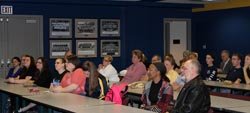 experienced, compassionate and caring teachers like Judy and Bob Gardner who were teaching by example. It contains snapshots of a reunion with formers students like Laura, Bob, Shivaun and Joe, old friends like Connie, Joe, Virginia, John, Joanne and Gerry,heart relatives Anthony and Sean and new friends named Cartier, Jennifer, Kristen and Skip. They were there to encouraging an old teacher in a new classroom to do his best. Everyone was making the most of a priceless opportunity.
experienced, compassionate and caring teachers like Judy and Bob Gardner who were teaching by example. It contains snapshots of a reunion with formers students like Laura, Bob, Shivaun and Joe, old friends like Connie, Joe, Virginia, John, Joanne and Gerry,heart relatives Anthony and Sean and new friends named Cartier, Jennifer, Kristen and Skip. They were there to encouraging an old teacher in a new classroom to do his best. Everyone was making the most of a priceless opportunity.
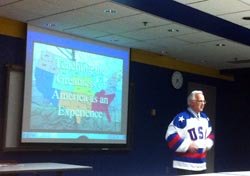
In room 214 on the second floor of the Marts Center, Kitch and I experienced the greatness of America. It is a moment from our Face of America journey that we will never forget.
Jason Genovese, one of our former students and now a college professor is right:
“Students become much more motivated and interested when they get invested in field-based projects…and that results in real learning.”
Mark Thackeray was right. Experiential learning at its best is teaching students how to be adults, and that includes teaching them courtesy, manners, standards and survival skills. It is encouraging them to reach up for the best edition of themselves.
Herb Brooks was right, “great moments are born from great opportunities.” That’s what we had on April 3, at Wilkes University.
Thank You, Judith,
Thank You, Bob,
Thank You, Friends, Former Students and Relatives,
Thank You, Wilkes University,
Thank You, America.
Please provide feedback to:
tony.mussari@gmail.com
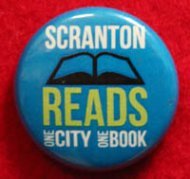 creates a memory that lasts a lifetime.
creates a memory that lasts a lifetime.
















